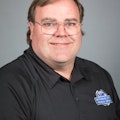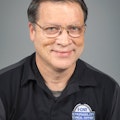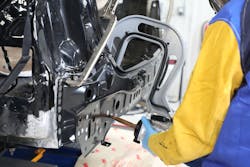The impact of technology and new substrate materials on collision repairs
Content brought to you by Auto Body Repair Network. To subscribe, click here.
The collision repair industry is facing unprecedented complexity, driven by the rapid advancement of technology and the emergence of new substrate materials. To prepare for this wave of change, it is critical to explore the significant changes in vehicle construction and their implications for repairs, while highlighting the need to adhere to OEM repair procedures and continuous learning in the industry.
Technological enhancements and repair complexity
Today's vehicles are equipped with advanced technologies, such as ADAS features and electric drivetrains, which impact the repair process. The integration of these technologies requires specialized tools, equipment, and knowledge to ensure accurate diagnosis and repair.
The rise of new substrate materials
The material landscape in the automotive industry has evolved dramatically over the past few decades. In the past, most vehicles in the U.S. were made of mild steel with consistent strength properties. However, the introduction of imported cars in the 1970s and the demand for improved safety and fuel efficiency led to the adoption of a variety of substrate materials.
Repair considerations and attachment methods
The increasing complexity of substrate materials poses challenges for collision repair technicians. Adhering to OEM repair procedures is paramount, as these guidelines provide specific instructions for each vehicle model. Additionally, continuous learning and training are essential for technicians to keep up with evolving repair techniques and emerging technologies.
Attachment methods have also evolved to accommodate different substrate materials. Often, we are now replacing structural components using attachment methods dissimilar from the ones employed by the OEM during the assembly process. Rivet bonding, adhesive bonding and mechanically fastening parts welded or laser-brazed by the factory are becoming commonplace on many vehicles. Technicians choosing not to review and follow OEM service information prior to installing structural components are repairing vehicles incorrectly resulting in unsafe repairs. Technicians must follow the prescribed attachment methods to ensure the structural integrity of repaired vehicles.Damage assessment challenges
The changes in substrate materials present unique challenges in damage assessment. Damage appraisers need to adapt their inspection methods to accurately identify damage and determine the appropriate repair approach. Continuous learning and researching vehicle manufacturers information, as well as accessing resources like I-CAR's Repairability Technical Support (RTS) portal, can provide guidance and clarification on repair procedures.
In summary, the collision repair industry is navigating a complex landscape driven by technological advancements and the introduction of diverse substrate materials. Adhering to OEM repair procedures, continuous learning, and seeking clarification when needed are essential for technicians to perform complete, safe, and high-quality repairs. As the industry continues to evolve, it is crucial for professionals to stay updated and embrace the challenges with a commitment to continuous education and improvement.
About the Author

Scott Kaboos
Principal, OEM Technical Relations Lead and Subject Matter Expert
Scott spent the first 20 years of his career in the collision industry as a structural repair technician. In that time, he worked for independent, dealership, and MSO shops. In 2014, he began a new chapter as a collision instructor at the High school and college level including becoming the Program Coordinator for the prestigious Fayetteville Technical College, Collision U program where he was recruited by American Honda to develop their collision technical training program. Scott is a 6 category I-CAR platinum individual, 3x Recertified ASE Master Collision technician and has earned AMCE and AMAM designations with AMI. He has also been a part-time welding instructor for I-CAR for the past seven years. In his spare time, Scott enjoys building street rods and restoring antique cars.

Jeff Poole
Manager, Subject Matter Expert
Jeff first ventured into a commercial shop in the late ’80s and not long after that was enrolled in some I-CAR classes. Many days in the collision shop repairing vehicles and presenting I-CAR courses in the evenings eventually led to national I-CAR recognition, when Jeff was awarded “Instructor of the Year" for 2005.
From repairing vehicles as a technician to helping with the development of training materials for the collision repair industry here in the U.S. and viewed in other countries, with over 35 years in the industry Jeff is a sought-after subject matter expert when it comes to identifying the important aspects of a scenario and how it applies to collision (or other loss type) and vehicle repairs for application in educational resources.
